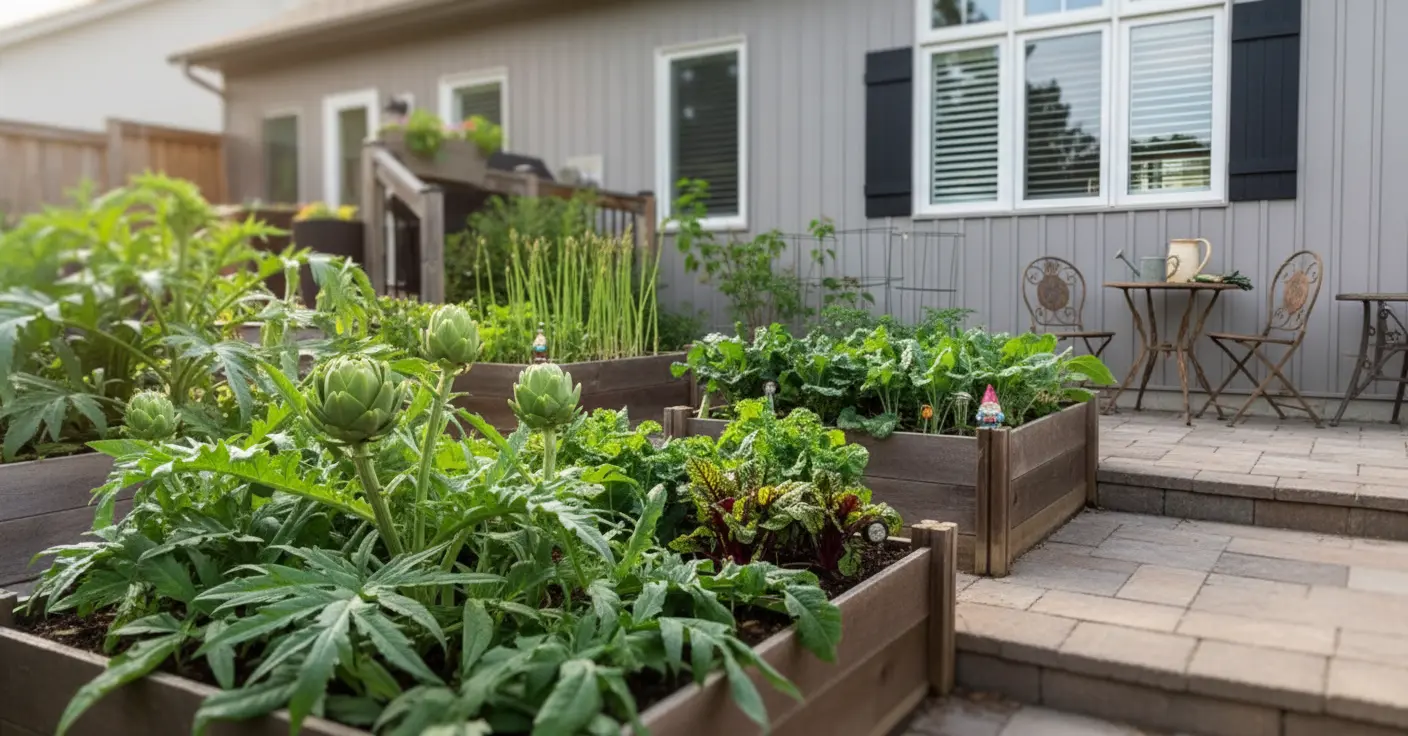Do you dream of a vegetable patch where harvests practically happen all by themselves and where watering cans get to collect dust for a change? Well, friend, the world of perennial vegetables might just be the Holy Grail for lazy—or, if we’re being generous, clever—gardeners everywhere!
The Rise of Perennial Vegetables: A Gardener’s Dream
Perennial vegetables, also flamboyantly known as « vivacious veggies » (okay, let’s stick to perennials), have earned their name thanks to their dazzling ability to return year after year. No need for a fancy gardening diploma, nor endless hours with dirt under your nails. Plant these once, and they’ll do the heavy lifting for you—braving drought and chills, resisting diseases and pests like absolute superheroes. They’re the unsung champions for anyone craving regular harvests with only a smidge of elbow grease.
Perhaps you’re shy of traditional kitchen gardens but long for a touch of green? Good news: these tough cookies settle happily in flowerbeds, planters, balconies, or terraces. Because their water requirements are as modest as their ego, they’re absolutely ideal if you (conveniently or not) forget that weekly watering routine.
A Simple Harvest, but Beware of the Side Effects
Sounds perfect? Almost! Harvest is crowning simplicity itself, yet there’s a small twist. Once comfortable in their new homes, some of these veggies set out to colonize the garden like they own the place. Wild garlic, for example, relishes its role as a green invader… But hey, if lush green carpets make you happy, why not?
Despite doing nearly everything solo, choosing where to plant perennials deserves some brainpower. It’s strongly recommended to group your perennial vegetables in one section of your garden. That way, they won’t cramp the style of future crops or veggie rotations. Picture it as a very well-organized shared flat where everyone knows their place.
How to Give Them the VIP Treatment (Minimal Fuss Required)
What about the soil? Before their debut, give it a good airing and loosening. Toss in some compost, lay some mulch, and these hardy types will settle in for the long haul. Don’t forget the trick of dividing clumps from time to time—this multiplies your harvest while sparing the plants from exhaustion. Win-win!
When selecting your vegetable stars, consider both your soil’s personality and your local climate. If the natural conditions aren’t to their liking, these perennials may sulk and behave like ordinary annuals instead. Cheeky lot, these perennials!
A nugget from seasoned gardeners: the best planting time? Either in spring or autumn, like with the classics. Wait till the frost has bid farewell and sidestep those broiling summer days. Each variety is a bit of a diva, so do check their specific quirks before planting.
Some Hidden Quirks: Managing Taste & Space
Not everything’s rosy (or even a tender green) in the perennial kingdom. Some possess definite invasive tendencies and must absolutely be restricted to their designated space. You can kiss goodbye to crop rotation wherever they settle, which may trim your veggie diversity a notch.
Another point worth chewing on: taste. Flavours often pack more punch than their annual cousins—delightful for adventurous eaters, maybe less so for those who like gentle flavors. But isn’t discovery half the fun of eating? Surprise your taste buds, you might just like it.
- Perennial veggies spring back by themselves each year
- Low-maintenance, water-sipping heroes
- Great in gardens, pots, or even on balconies
- Group them together for smooth cohabitation
- Pay a little attention to soil prep and occasional dividing
- Mind their sometimes boisterous personalities and robust taste
The final good news? Finding seeds and starter plants for these tireless vegetables has never been easier, thanks to the wonders of the Internet and specialist nurseries. So, are you ready to switch to effortless harvesting mode?

John is a curious mind who loves to write about diverse topics. Passionate about sharing his thoughts and perspectives, he enjoys sparking conversations and encouraging discovery. For him, every subject is an invitation to discuss and learn.






